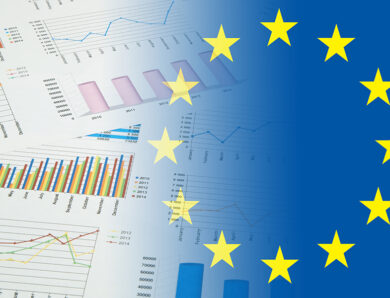
How do we measure the economic weight of tourism in France?
In 2021, tourism contributed 3.0% of the wealth created by the French economy, i.e. 75.7 billion euros. This was more than 4.0% before the health crisis. To measure this tourism direct gross domestic product (TDGDP), Insee applies the concepts and methods recommended at the international level. The calculation consists of evaluating the value added by tourism in each of the sectors of activity. It first involves distinguishing between tourism expenditure and non-tourism expenditure. Then intermediate consumption and imports of goods and services must be subtracted. The resident visitor contributes more to the tourism GDP than the non-resident visitor coming from abroad, before and during the health crisis.
What does tourism represent in the French economy? How does its weight compare with other countries? How does it evolve from year to year? In order to answer these questions and thus provide reliable data to all tourism stakeholders and, more broadly, to citizens who are interested in the subject, Insee has developed a tourism satellite account. This is based on the system of national accounts.
Tourism represents 3.0% of GDP in 2021
Until now, Insee has only measured tourism consumption, which allowed for an understanding of what tourism represents in the French economy, but was not sufficient to evaluate its share in total wealth creation. It is only since April 2023 that we have a measure of the French direct tourism gross domestic product (TDGDP), thanks to work carried out by Insee in line with internationally standardized concepts and methods.
As a result, in 2021 the creation of wealth associated with tourism, i.e. TDGDP, represents 3.0% of France’s total GDP [Chassard M., 2023]. The same method was used to measure the economic weight of tourism in 2020 and 2019. This was higher in 2019, before the health crisis that strongly affected tourism: 4.1% of total GDP. The value added attributable to tourism activities in France was estimated in 2017 at 4.4 percent of GDP, using a similar method by the Ministry of the Economy’s General Directorate of Enterprises [Lomonaco, 2019]. While France is in the top three in terms of the number of tourists, these indicators place it in the middle of the European Union countries in terms of the share of tourism value added in total value added (4.5% for the whole of the Union in 2019). This illustrates a lower dependence of the economy on tourism in France than in other countries such as Croatia (11.8%), Portugal (8.1%), Spain (6.9%) or Italy (6.2%).
Not every activity is 100% tourism
But how does one arrive at the evaluation of this aggregate, the TDGDP? The first step is to isolate, in each sector of activity, the tourism expenditure, i.e. French or non-resident visitors (tourists and day-trippers), during or with a view to the trips they have made in France or from French territory (see diagram). For example, not all expenditure in restaurants and cafés is by tourists. In 2021, 20% of spending in restaurants was by tourists. As far as accommodation is concerned, 100% of spending in hotels and campsites is considered to be tourism spending ; to this is added 12% of spending on accommodation in the residential stock as a whole, corresponding mainly to second homes, giving a total of 16% of « accommodation » spending (hotels, campsites and residential stock) attributable to tourism. This tourism rate changes every year. In restaurants, it was higher before the health crisis: 24% in 2019. In each sector, it is evaluated with various statistical sources [Chassard, 2023].
Diagram – Method of calculating the economic weight of tourism in 2021

Source: Insee, tourism satellite account, 2014 base.
Tourism direct GDP accounts for half of tourism expenditure
Not everything that tourists spend can be equated with the wealth creation associated with tourism. For example, the price paid for a night in a hotel with breakfast is partly used to pay for the food that the hotel needs to serve breakfast, but also for cleaning products for the household, energy for heating, etc., which constitute intermediate consumption. These intermediate inputs must therefore be removed from the amount of tourism expenditure in order to measure the value added directly produced by the hotel.
In addition, some tourism expenditures are for goods and services that were not produced in France but were imported. These imports are much smaller than intermediate consumption, so the amount of these imports must also be removed to calculate value added. For example, a souvenir that a visitor buys during his or her stay in France may have been manufactured abroad, and only the difference between its selling price and its import price counts in the value added.
In total, the TDGDP corresponds to the sum of the value added directly linked to tourism in each sector of activity, i.e. tourism expenditure minus intermediate consumption and imports, plus taxes and minus subsidies. In 2021, tourism expenditure, also known as « domestic tourist consumption », is estimated at 140 billion euros. If we remove intermediate consumption and imports of goods and services, we end up with the TDGDP of tourism, estimated at 75.7 billion euros.
If we take the example of the restaurant industry, this sector will create 32.9 billion euros of added value in 2021. Considering that 20% of the restaurant business is tourism in that year, the tourism direct gross value added for restaurants and cafés is thus 6.7 billion euros.
Domestic customers has generated three quarters of the tourism GDP in 2021
How much of TDGDP is generated by domestic customers, i.e., resident tourists who consume in France, and how much by non-resident tourists, who come from abroad? Non-resident tourists spend more than resident tourists, for example in the restaurant business. But since there are far fewer of them, tourist spending depends mostly on resident customers: in 2021, they will contribute 72% of tourist spending. This was 64% in 2019, as foreign customers were partially absent due to the health crisis in 2021. The domestic clientele thus generates the bulk of the TDGDP.
Two reference guides to evaluate the economic weight of tourism
To ensure that the data are comparable between countries and over time, Insee applies methods that conform to international recommendations. In the 1990s, several countries used economic variables from their national accounts to try to estimate the economic weight of tourism. This work has been progressively taken up and synthesized by international organizations (UNWTO, OECD, European Union), resulting in two reference guides: one specifying the concepts and scope of tourism (IRTS) and another defining a tourism satellite account (TSA-RMF). The concepts and methods of economic measurement of tourism have thus been stabilized at the international level since 2008. ■
Additionnal information
- Chassard M., 2023, « Méthode d’élaboration du compte satellite du tourisme« , Document de travail Insee, April
- Chassard M., 2023, « Avec la crise sanitaire, la part du tourisme dans le PIB de la France tombe de 4,1 % en 2019 à 3,0 % en 2021« , Insee Focus no. 297, April
- Chassard M., Mainguené A., 2022, « La consommation touristique en France chute d’un tiers entre 2019 et 2020« , Insee Focus no. 262, February
- Lomonaco J-C., 2019, « La croissance de la consommation touristique en France se confirme en 2018« , 4 pages de la DGE no. 91, December
- Nations Unies, « Compte satellite du tourisme : recommandations concernant le cadre conceptuel 2008« .
Photo credits: © fottoo – stock.adobe.com





